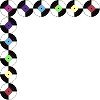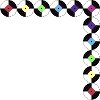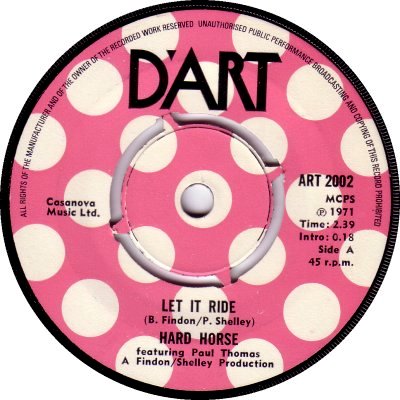

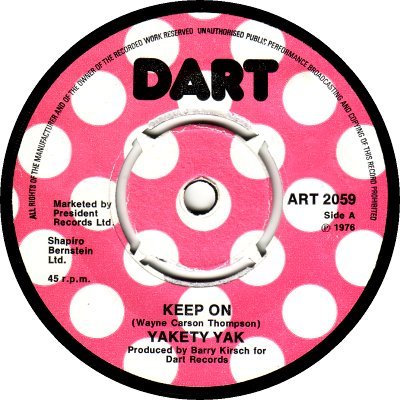

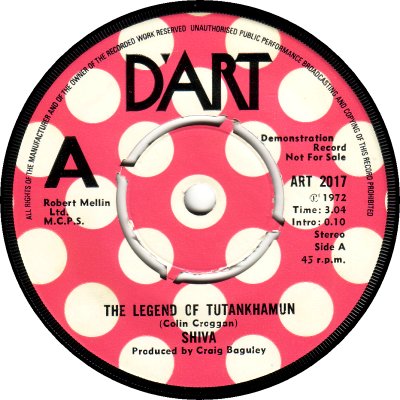
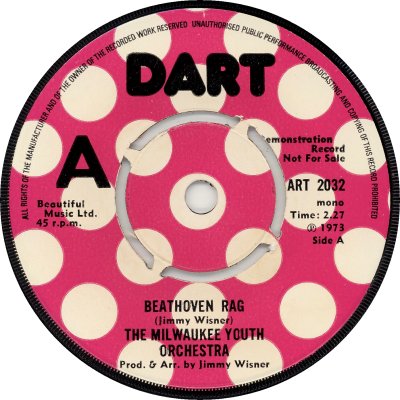
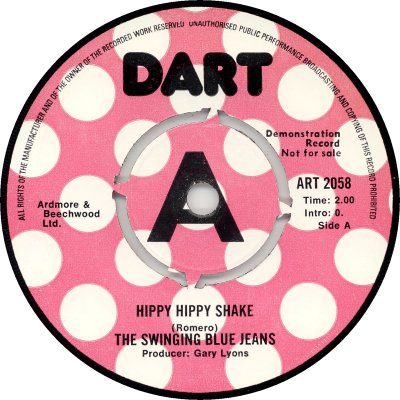
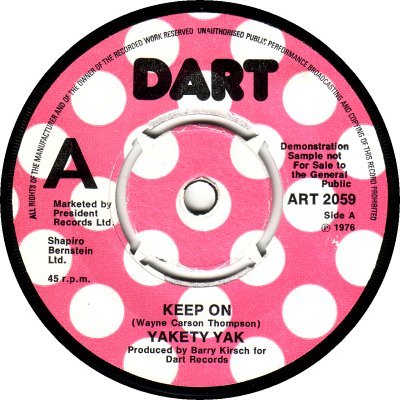

Dart was formed in the Summer of 1971 by Clive Stanhope and Tim Satchell of the Chart Productions company. 'Record Retailer' of the 3rd of July, reporting on the forthcoming launch, said that the company's policy was to concentrate on singles; the first two had been licensed from USA labels and would be out in September. In the event a pressing and distribution deal was agreed with RCA, but the first releases were slightly delayed and only came towards the end of October. Five out of the first six releases were licensed from the American production team of Steve and Bill Jerome, but they don't appear to have had American equivalents. For the first eighteen singles the label name was given as D'Art (as in 'objet d'art'?) but it dropped the apostrophe with the nineteenth and became just plain Dart - if the word 'plain' can be used to describe something which is pink with white spots. The music press referred to the label as Dart from the beginning, as does the only early press release that I have seen - that of ART-2009. Numbering was in an ART-2000 series. 'MW' of the 29th of January 1972 said that a three-year 'first option' exchange deal had been signed with Peter Schekeryk Entertainments, of the USA. The article claimed that as a result a track called 'Love In The Afternoon' would be coming out on Dart and a Dart track called 'Maria Isabella' would be released by Schekeryk in the States, but neither seems to have happened; nor are there any signs of other exchanges.
Despite having some varied and interesting fare on its catalogue - from the Disco / Soul of the Outriders to the Heavy Metal of the Incredible Hog, with a fair number of Pop and Novelty items thrown in - Dart seems to have struggled. 'MW' of the 19th of January 1974 reported on a planned new venture: a series of three 'self-help' EPs by illusionist Romark, 'Relax, You're Going To Stop Smoking / Lose Weight / Gain Confidence', backed by a marketing campaign, but a couple of weeks later the issue of the 2nd of February revealed that the Romark material had been sub-licensed to another label and that, following the expiry of its pressing and distribution agreement with RCA at the end of 1973, Dart hadn't been able to arrange a replacement deal - indeed, it didn't envisage getting one until the autumn. Worse was to follow: 'MW' of the 23rd of March said that Dart might have to be wound up, thanks to a lack of capital and a drought of airtime on the BBC for its products. The company had been looking for a buyer or an equity agreement, but without success. Fortunately, though, help was at hand. 'MW' of the 4th of May was able to report that Kassner Associated Publishers had come to the rescue: Edward Kassner, David Kassner and Brian Seed were to join Stanhope and Satchell on the Dart board. According to the article the Kassners were to have financial control, with Dart controlling the artistic side of things; the revived company was looking to purchase an American MOR catalogue, with the intention of releasing a series of fifteen albums. Presumably as a result of this intention a mid-price LP label, Bullseye, was set up to act as an MOR outlet a couple of months later. 'Billboard' of the 11th of May supplied the information that as a result of the new arrangements Ed Kassner's distribution company, Enterprise, would handle Dart records; a spokesman for Dart was quoted as saying that President - another Kassner company - would be responsible for their manufacture, presumably through its associated British Homophone plant.
1975 saw Dart enjoying its first hit, though it was one that it had to fight for. When Polydor released 'Shoes' b/w A Song For All' by Reparata (2066-562; 8/75) Dart took them to the High Court, claiming ownership of the copyright. 'MW' of the 13th of September revealed that after some brief court action an out-of-court settlement had been agreed, to the effect that from the 8th of September the record would be released on the Dart label with the original catalogue number and would be distributed both by Polydor and by President. Subsequently the single broke into the Top 50, reaching No.43. Sadly, however, that was to be Dart's only Chart action. In the wake of that success, 1976 proved to be a year of change and decline. Co-founder Clive Stanhope left in January to join Saga's new Trojan company; he was replaced as managing director by Tony Satchell, who had formerly been the director of promotions ('MW', 17th January). Then, at the end of June, Satchell left the company after disagreeing with a proposed reorganization, and Edward Kassner took over the running of the company ('MW', 26th June). He doesn't appear to have had a lot to do, in that capacity, as Dart issued only a couple more singles before being shelved, in early 1977. It was taken down from the shelf in 1981 for a New Wave single by Jakpak, 'Soul In A Box' b/w 'Star Struck' (ART-2063; 2/81), but that was the last Dart to be thrown.
Dart persevered with its distinctive pink-and-white labels throughout its existence, the only changes of any note being the alteration of the name and logo from the 'D'Art' of the early issues (1) to the 'Dart' of ART-2019 onwards (2), and the addition of the text 'Marketed by President Records Limited' from ART-2059 till the end (3). An exception to the 'spotty labels' rule was the Reparata single referred-to above, which, because of the agreement with Polydor, came in injection moulded form, was pressed by Phonodisc, and had a Polydor catalogue number (4). Demonstration copies carried the appropriate wording; they also had a small 'A' at 10 o'clock (5) until at least ART-2053. The small 'A' was replaced by a medium-sized central one (6) from ART-2055; ART-2059 was an exception, in that it had the '10 o'clock' version and slightly different wording (7). There were no Dart company sleeves, but during the RCA era demos occasionally had a special sleeve (8). Throughout that period manufacture was by CBS, who were responsible for pressing most of RCA's singles in the early '70s; from 1974 onwards British Homophone did the job. As can just about be made out from the scans, British Homophones had somewhat rough centres (3, 7, 8).
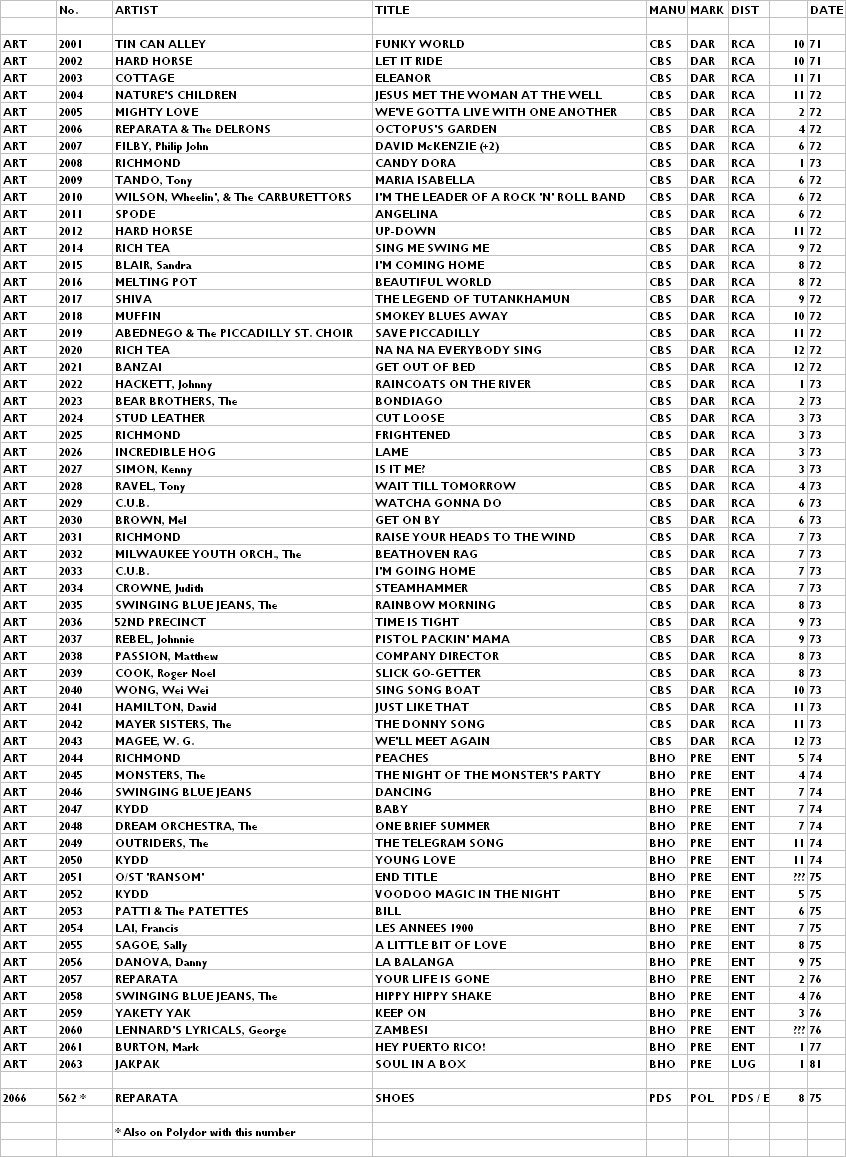
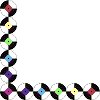

Copyright 2006 Robert Lyons.
